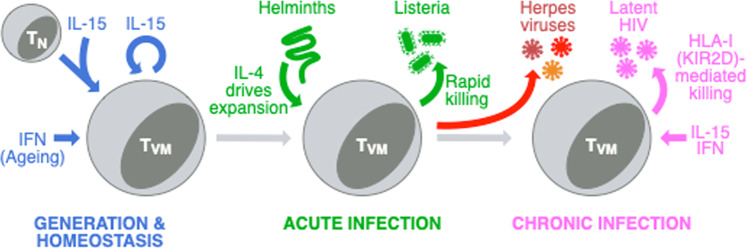Fig. 1.
TVM cell generation, homeostasis, and roles during acute and chronic infections. IL-15 is essential for the initial generation of TVM cells and their self-renewal in the periphery, while type I IFNs promote their accumulation with age. During acute infection, TVM cells can be expanded by IL-4 production during helminth infections, and expanded TVM cells can mediate rapid control of listerial infections. In chronic infections, helminth-expanded TVM cells can promote the control of gammaherpesvirus infection in mice. The work from Jin et al. suggests that increased IL-15 and type I IFN production during latent HIV infection increases the frequency of TVM cells, which can improve control of the viral reservoir. This control may be mediated by NK cell receptor-mediated killing, involving HLA-I and KIRs

